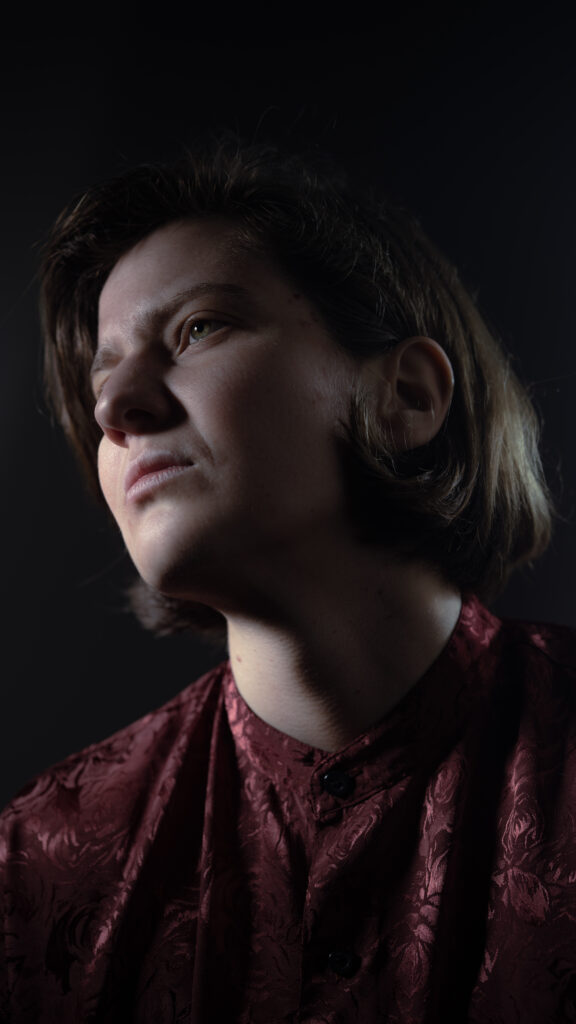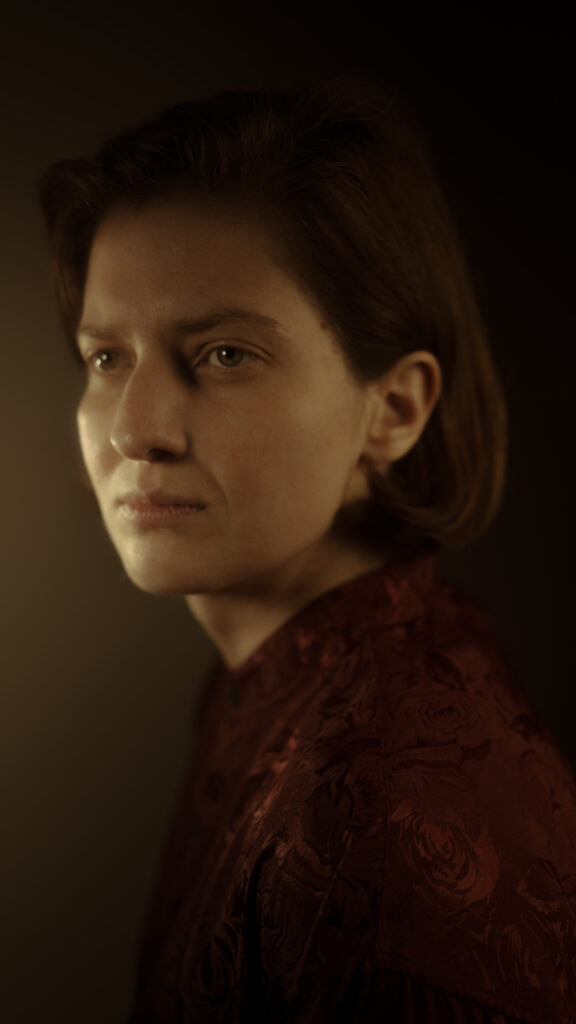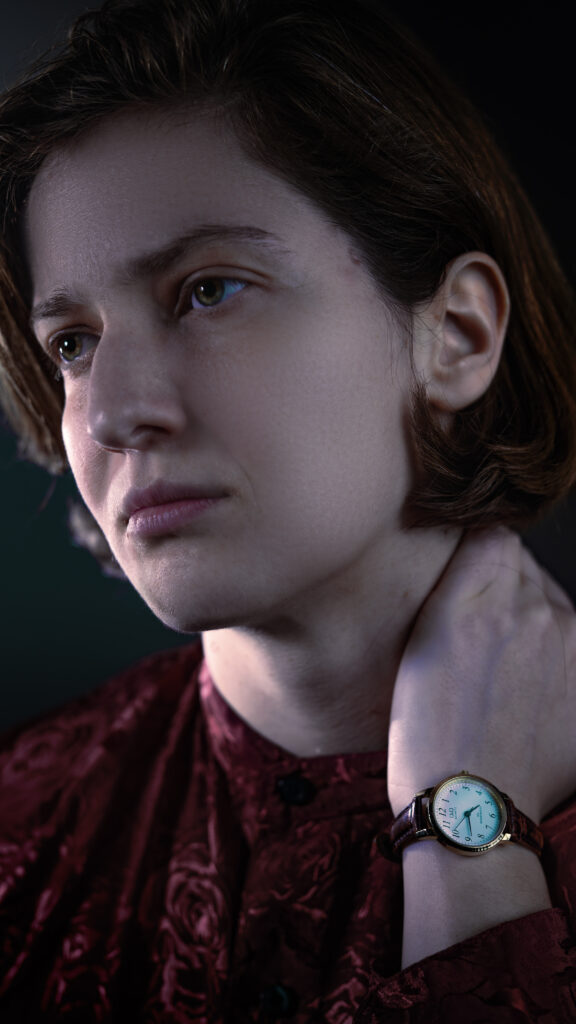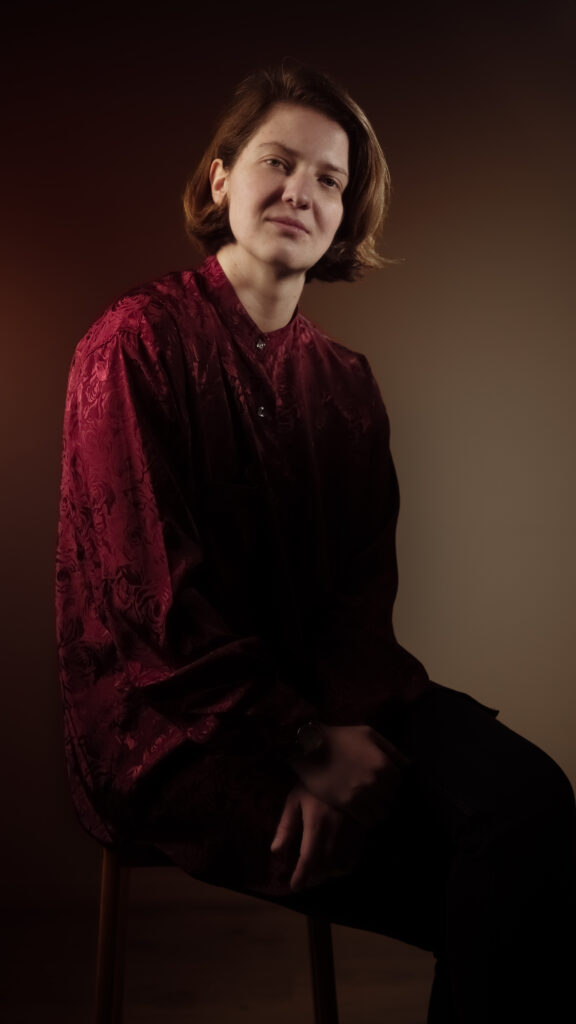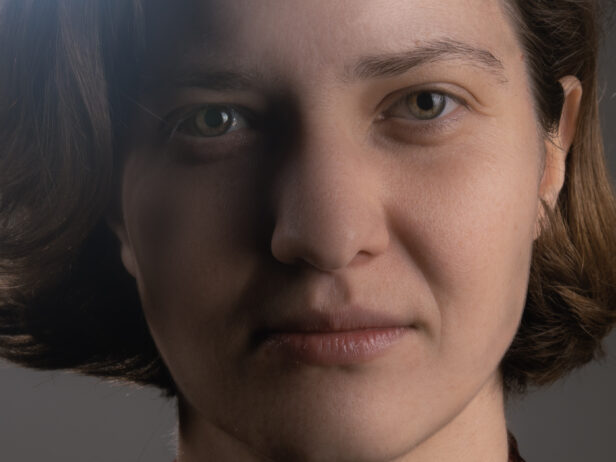
ANDREA KNEZOVIĆ
Andrea Knezović (1990) is a visual artist, researcher and writer with an MRes in Artistic Research from the University of Amsterdam and a BA from the AVA-Academy of Visual Arts Ljubljana. Her artistic practice plays with semiotics and dialectics of value by examining — through poetic gesturing — correlations between institutional and identity politics.
Knezović is a Chair of the Board of the Salwa Foundation and co-founder of the Art & Research platform MARC Amsterdam. She contributed to various discursive journals including Massachusetts Institute of Technology (MIT) Thresholds Journal, Lish Journal London, the University of Amsterdam Simulacrum Jurnal-Tijdschriftvoorkunst en cultuur and Biennale of Young Artists of Europe and Mediterranean.Her artwork has been exhibited in museums and galleries across the world including, The Keller Gallery MIT (USA), Nieuw Dakota (NL), CukrarnaGallery (SI), London 12 Star Gallery (UK), Museum of Contemporary Art Ljubljana (SI), Vienna Contemporary (AT), Kiribati National Museum and Cultural Centre (KI). Her work is part of the SCCA-DIVA Archive collection. In 2013 and 2015, she was nominated for the Essl Art Award.
–Can you tell us about your practice – what are you working on at the moment?
As a visual artist and a researcher, my practice tends to triangulate between conceptual arts, research and institutional work, while using different types of mediums and materials as an outlet for the initial artistic inquiry. I frequently use writing as an extension of my visual dialectics, although creating installations is a large part of my practice. For me, employing research is the most essential in understanding what I do. Coming from both artistic and academic backgrounds— and stubbornly refusing to align exclusively with either of them— I flirt with different interpretations and embodiments of the role of an artist. So oftentimes I am presented with a question: Is what you do relational to who you are?
I presume that the dichotomous qualities of such a question can transcribe as well to the vagueness and ambiguity of the general parameters in the arts and its discursive field.
Moving forward, my work examines articulations and correlations between institutional and identity politics. Usually, I like to unfold different propositions on the politics of care, its institutional implications and its mythological aspect. In particular, I investigate intimate tropes depicted in our psycho-cultural landscapes.
I find knowledge production extremely relevant in creative pursuits. I believe that we all carry a particular level of responsibility as creative practitioners working both with arts and institutional frameworks. My practice is not just a blind ritualization of my own interest but rather a collection of insights and reflections on that which has been established collectively and intergenerationally through intuitive and formal channels.
Currently, I have been busy on several different fronts. I have been working on two new projects for local and international upcoming shows. The project Nocturnalities: Bargaining Beyond Rest looks at the politics of sleep inside 24/7 late capitalism. It looked at sleep and consequently rest through the performative forms of work – highlighting their communal impact, temporal boundaries, speculative prospect and mythological heritage. The other one is The Games We Play which investigates the intersection between play, memory and queer kinships. It looks at Eric Berne’s work on transactional analysis, Hubert Damisch’s institutional critique, and José Esteban Muñoz’s reimagining of queer futurity while unfolding individual and institutional care negotiations.
Parallel to my art practice, I am Chair of the Board for Salwa Foundation and have recently started working as an associate curator for the Bradwolff Projects where I am, in collaboration with the director, developing exhibition programmes. In addition to my institutional work, I am also a founding member of MARC Amsterdam, a platform that is busy developing hybrid collaborative practices and programmes between artists, researchers and partner institutions.
-From the perspective of now, what can you say about the pandemic and its effect on your art practice?
Yes, indeed the effect of a pandemic on our art practice. I presume that oftentimes artists’ laborious intent and their structures are so precarious in their nature that any additional disturbance can act more as a moderator rather than a disturbing factor to one’s own professional trajectory. Although, that is as well presumption in itself – with a big P.
We all operate differently, with different agencies and circumstances.
I cannot deny that at one point we all just became confined within our professional performance.
I mean the lockdown, locked us out of our sanity. Or at least launched it into a long sabbatical.
I have definitely started writing again, indulging my intellectual neurosis while trying to justify it through various discursive entanglements such as publishing for MIT Thresholds Journal — a peer-reviewed journal of the MIT Department of Architecture and my personal pride and joy.
What else is there to do when all of your exhibitions are cancelled? And the only way one could continue presenting their work is through those awkward Zoom performative lectures.
What a hideous thing Zoom is. It’s more of an online seance than anything else:
Andrea, are you there?
Make a sound if you can hear us.
We can hear you, can you see us?
I believe this was my pandemic practice in a nutshell.
In terms of pandemic effects and its silverlings within the arts, I presume that there has been a multitude of urgencies that ripped apart the cultural sector. Economic cuts and the pandemic cultural embargo left scars on the already partially wobbly artistic political identity and exhausted whatever was left of its institutional agency. The housing crisis created an inexplicable amount of hardship for a vast majority of artists and cultural workers (including myself), jumping from one unreliable contracting to the other.
Exhistalism, a la carte.
It was a rough time for everyone. It wasn’t enough that each of us suffers from some kind of unexpected, unexplained diagnosis but now we also needed to think about our creative infrastructure sizing in its existence.
What madness!
Like we didn’t have precarity in our standard repertoire. In the most dramatic dystopian mentality, if all the cultural institutions are combusted into thin air, what does that mean for us? Who do we create for in times of institutional sleep?
I guess I had too much time for thinking.
-What kind of alternative models of networking did you observe in the artistic settings during the pandemic and do you still practice them?
Tinder.
And occasional hardly identifiable form of social articulation coming from the neighbouring windows.
–What is your take on the Amsterdam art scene? How do you establish professional connections and reach out to the relevant networks?
I would say that there isn’t such thing as a homogeneous Amsterdam art scene. It is quite hard to point a finger and place one opinion on such a generalized assumption. There is the ex-pact art scene that is continuously competing with itself, challenging local ambitions with an international attitude.
Worlds within worlds: like never ageing Rietvelds, SNDOs, Sandbergs and all the other eternal sweethearts of creative education. Then there is De Appel royal delegation with their decorum intellectum, unaccounted misfits of artistic research and academic hybrids, and of course the hardworking freelancers of the cultural sector.
The ex-pats bring zest to this region and its exciting multiverse of creativity. Most of them in the end find a way to a great blend of the general cultural pool.
Then there is a Dutch art scene that definitely has varieties of its own- creative topologies and institutional sceneries playing its own inter-regional political game.
From the Independents (NGOs) and their vital pursuits for meaning in culture, to slick public institutions and their 10-year strategic plans, to private trust funds shuffling numbers and prospects, all of them busy with ways of packaging arts and culture to a specific signifying mould.
Then there is the boomer generation which played things differently, although those times are gone now and so are its privileges.
From where I stand now, there are lots of voices coming from all ends, all trying to have a conversation at the same time.
For me, in this case, what is relevant is to listen to those voices that seem more consistent, no matter the rhetoric or ideological stand. It is their consistency that discloses some bigger, larger body of what we would like to call the cultural scene. It discloses the fabric of the art scene and its patterns of the social constellation- mapping it through institutional interexchange, friendly association or the tone and vocabulary insinuated in social interaction.
To my understanding, those are the tropes relevant to forming a better view of the cultural network and potential future collaborators.
Or you yourself just become an epicentre of attention that circulates its own social relevance.
-As an expat living in Amsterdam, do you still carry the socio-political urges of your homeland in your art practice? If so, please tell us?
Perhaps. Although it is also a bit passé to perpetuate it in my case.
Meaning, coming from the ex-Yugoslav context and carrying its geopolitical heritage and socio-cultural intricacies.
These days I focus more on things that I am close to and have an immediate grasp on. Without particular nostalgia toward the notion of homeland. I left Croatia pretty young, and not for any particularly tragic reason, although tragedy could have been found anywhere in those times following the collaterals of the history in place.
I have my own State in Time and it has been serving me so far pretty well.
I’ll tell you one thing though. There is definitely one urgency that everyone shares and it gets triggered in any landscape. It’s called intergenerational trauma.
That one we can always work on.
-How do you see your personal development in the upcoming years? Do you have a plan or do you go by instincts?
Haha, instinct. That’s lovely. I feel like I’m back in my early twenties. No, unfortunately, I am a victim of an awful infection called adulthood. It comes and sneaks in, swipes you off your feet when you least expect it.
Besides during the pandemic lockdown, I had quite extensive amounts of time to work on my intimate developments and “interpersonal quotas”. I can tell you for sure it was an expensive sport and exceeded my budget. Yet here we are, all fixed up and mentally rejuvenated. Right?
But I presume that’s not what you are aiming for.
At the moment I am focused on developing, sustaining and expanding my master trifecta – my artistic work, institutional investments and engagements with education and policymaking.
So far going strong. Let’s see how it unfolds.
-Please name some essential aspects necessary for you to keep your practice sustainable?
I presume sustainable personal and institutional infrastructural support is essential for every creative development.
In the case of professional practice – diversification and decentralisation of funding opportunities and stimulating professional networks are at the top of my list. Access to care and the right to knowledge exchange will also fit those charts.
-What is your strategy to recharge?
Breathe.
And don’t talk too long to imaginary friends.
-If you would be reincarnated as some other plant or animal what would it be?
Lynx
Photos by Roman Ermolaev
by WOW
